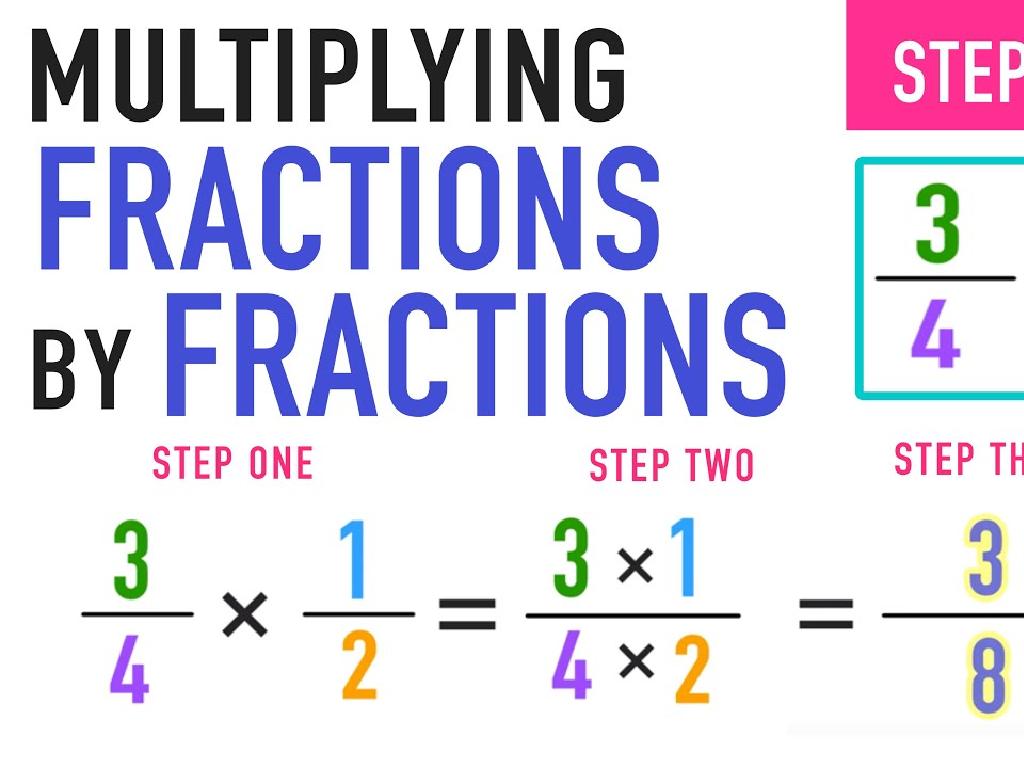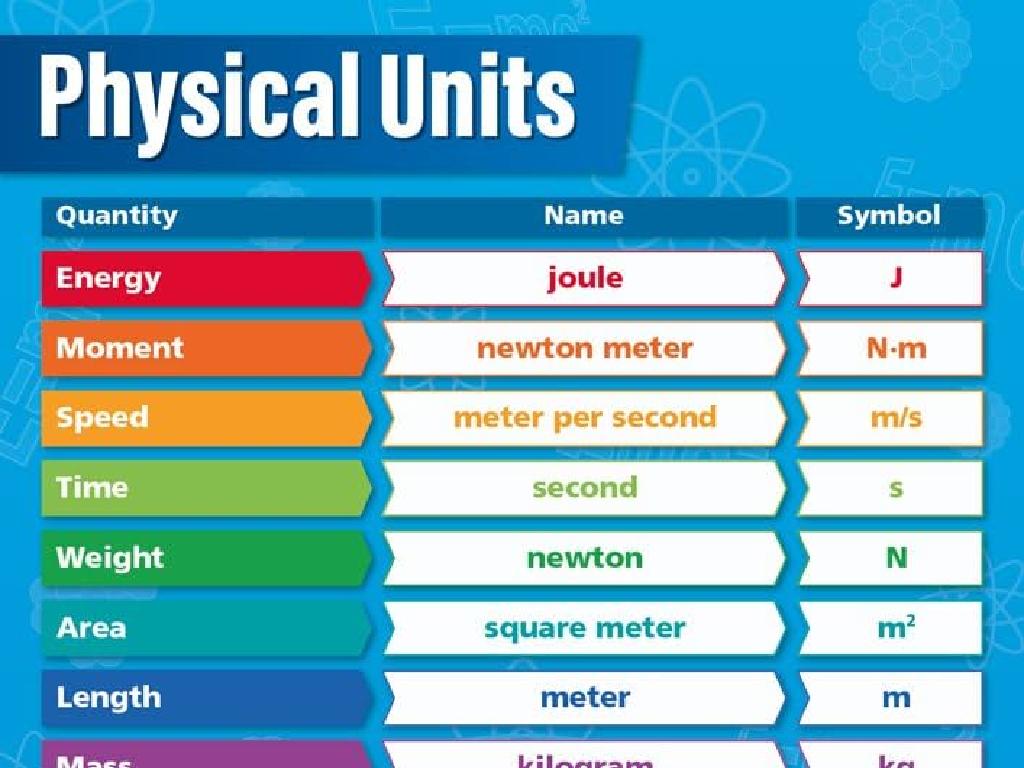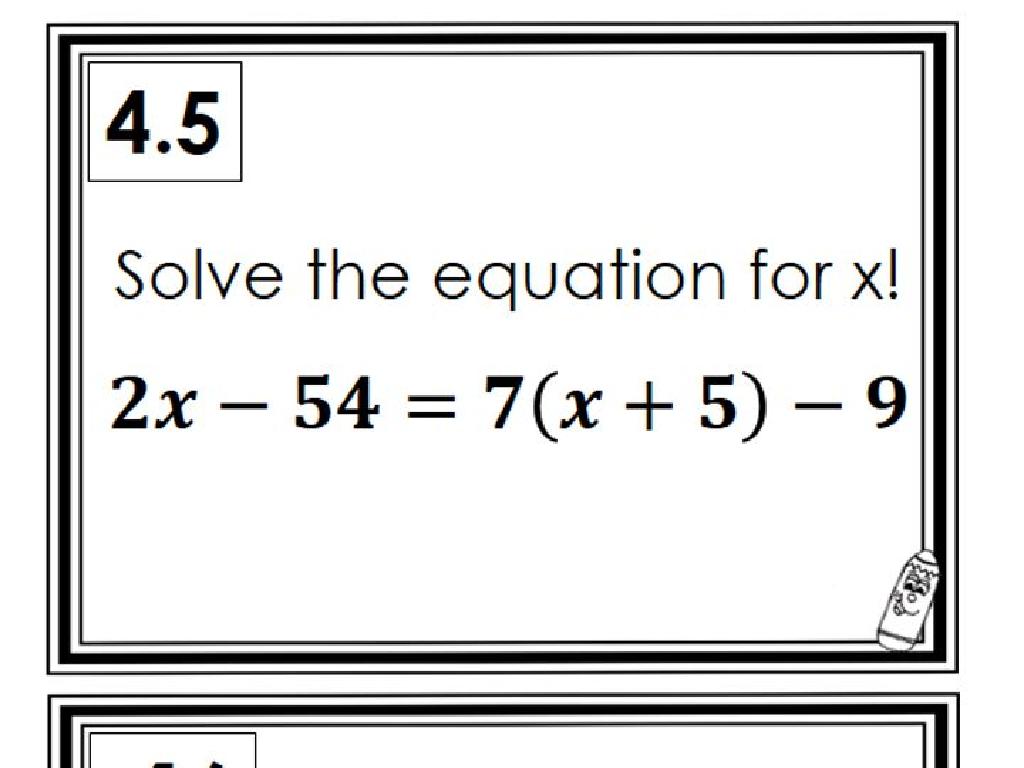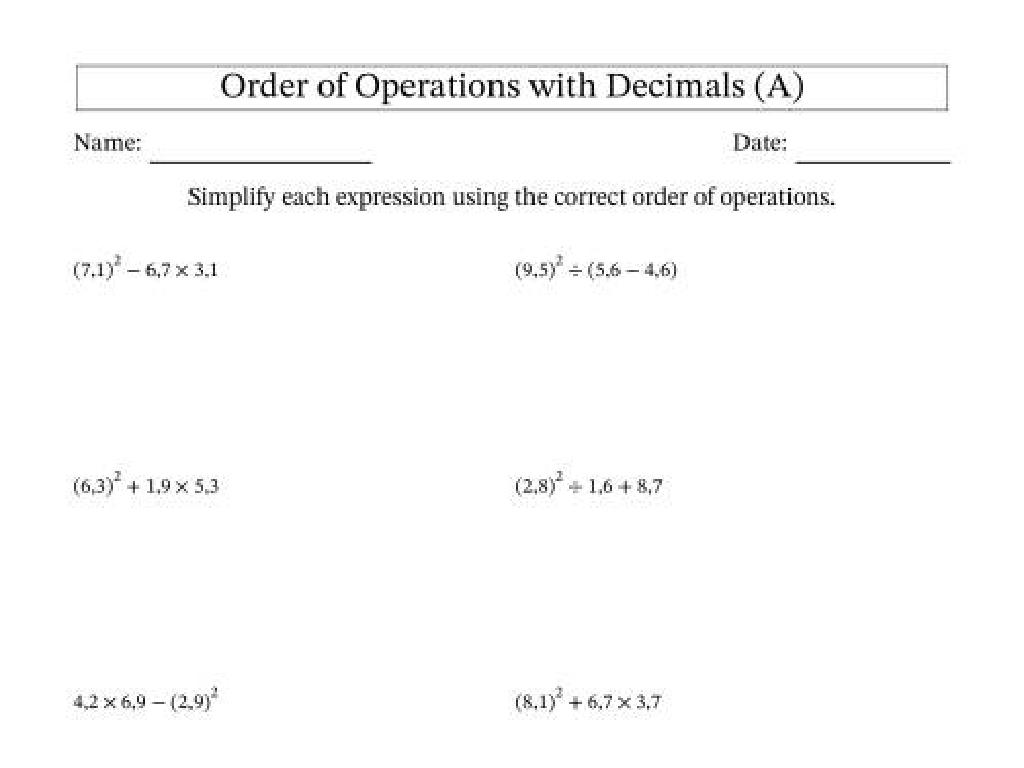A.M. Or P.M.
Subject: Math
Grade: Second grade
Topic: Time
Please LOG IN to download the presentation. Access is available to registered users only.
View More Content
Good Morning, Time Explorers!
– Greeting: Good morning, class!
– Today’s topic: A.M. and P.M.
– A.M. stands for ‘Ante Meridiem’, P.M. for ‘Post Meridiem’
– A.M. and P.M. help us know the day’s part
– A.M. is from midnight to noon, P.M. is from noon to midnight
– Why it’s important to understand
– Helps us schedule our day, like school in A.M. and playtime in P.M.
|
Begin the class with a warm greeting to set a positive tone. Introduce A.M. and P.M. as concepts that divide our 24-hour day into two parts. Explain that A.M. stands for ‘Ante Meridiem’ which is Latin for ‘before midday,’ and P.M. stands for ‘Post Meridiem’ which means ‘after midday.’ Clarify that A.M. is the time from midnight to noon and P.M. is from noon to midnight. Emphasize the importance of knowing the difference so we can follow daily schedules properly, such as attending school in the A.M. and having playtime or dinner in the P.M. Encourage students to think of activities they do in the A.M. and P.M. to make the concept relatable.
Understanding A.M. and P.M.
– A.M. means ‘before midday’
– ‘Ante Meridiem’ is Latin for A.M.
– P.M. means ‘after midday’
– ‘Post Meridiem’ is Latin for P.M.
– A.M. is midnight to noon
– 12:00 AM is midnight, 6:00 AM is early morning
– P.M. is noon to midnight
– 12:00 PM is noon, 6:00 PM is evening
|
This slide introduces students to the concept of A.M. and P.M. and what they stand for. A.M. and P.M. are abbreviations derived from Latin terms used to distinguish the two 12-hour periods of the standard 24-hour day. It’s crucial to help students understand that A.M. covers the first half of the day from midnight to noon, while P.M. covers the second half from noon to midnight. Use examples like ‘When you wake up, it’s usually A.M., and when you have dinner, it’s P.M.’ to make it relatable. Encourage students to look at clocks and think about whether it’s A.M. or P.M. during various daily activities.
Understanding A.M. Hours
– A.M. for morning routine
– A.M. is when we start our day and prepare for school.
– Breakfast time is A.M.
– Most people eat breakfast in the A.M. hours.
– Brushing teeth in A.M.
– Morning activities like brushing our teeth are done in A.M.
– Reading time in A.M.
– We often read or study in the A.M. before school.
|
This slide is aimed at helping second-grade students understand the concept of A.M. as it relates to their daily morning routines. A.M. stands for ‘ante meridiem’ which is Latin for ‘before midday.’ It’s important for students to associate A.M. with activities that occur from midnight until noon. Examples provided are relatable to their everyday life, such as waking up, eating breakfast, brushing teeth, and reading or studying, all of which typically happen in the A.M. hours. Encourage students to think of other morning activities they do in A.M. and share with the class to reinforce their understanding.
Understanding P.M. Hours
– P.M. starts after lunchtime
– Afternoon play is during P.M.
– Think of your favorite after-school activities!
– Dinner time is in P.M. hours
– What do you usually have for dinner?
– Bedtime routines are P.M. too
– What are your bedtime rituals?
|
This slide is aimed at helping second-grade students understand the concept of P.M. hours in a day. P.M. stands for ‘post meridiem’ which is Latin for ‘after midday.’ It is important for students to associate P.M. with activities they commonly perform in the second half of the day, after 12:00 noon. Examples include post-lunch activities, playtime, dinner, and bedtime routines. Encourage students to think about what they usually do after lunch and discuss their own P.M. activities. This will help them relate the concept of P.M. to their daily lives and understand the division of the day into A.M. and P.M. segments.
Understanding A.M. and P.M. in Our Daily Schedule
– 7:00 A.M. – Wake up time
– The time we get out of bed in the morning
– 12:00 P.M. – Lunch time
– When the sun is high, we eat our midday meal
– A.M. vs. P.M. activities
– Think about what you do in the morning vs. the evening
– Create your A.M./P.M. chart
– Draw a chart with your morning and evening routines
|
This slide aims to help second-grade students differentiate between A.M. and P.M. by associating these time designations with daily activities. A.M. stands for ‘ante meridiem’ which is Latin for ‘before midday,’ and P.M. stands for ‘post meridiem’ or ‘after midday.’ Use familiar routines such as waking up at 7:00 A.M. and having lunch at 12:00 P.M. to illustrate the concept. Encourage students to think of other activities they do in the morning (A.M.) and in the afternoon or evening (P.M.). As an interactive part of the lesson, students can create a chart of their daily activities, categorizing them under A.M. or P.M. This will not only reinforce the concept but also help them understand their own daily schedules. The teacher should prepare to discuss more examples and guide students in creating their charts.
Practice Time: A.M. or P.M.?
– Observe the clocks I show you
– Decide if it’s A.M. or P.M.
– Think: Does the time look before or after lunch?
– Use clues to determine time of day
– Morning times are A.M., afternoons are P.M.
– Share your answers with the class
|
This activity is designed to help students practice distinguishing between A.M. and P.M. by observing various clocks. As you show each clock, encourage the students to look for clues that might indicate whether the time is in the morning or afternoon. Remind them that A.M. times are before lunch, typically when they start school, and P.M. times are after lunch, which might be when they have playtime or go home. For the teacher: Prepare several images of clocks showing different times throughout the day. Guide the students through the process of determining A.M. or P.M. for each clock. Encourage participation and ask students to explain their reasoning. This will help reinforce their understanding of daily time cycles and how to read them on a clock.
Class Activity: Making a Daily Schedule
– Draw a line on your paper
– Label one side A.M., other P.M.
– List A.M. activities
– Example: 8 A.M. – Eat breakfast
– List P.M. activities
– Example: 8 P.M. – Bedtime
|
This activity is designed to help students understand the concept of A.M. and P.M. and how it relates to daily activities. Provide each student with a piece of paper and guide them to draw a line down the middle. Explain that A.M. stands for the time between midnight and noon, and P.M. stands for the time between noon and midnight. Ask them to think about what they do during these times and fill in their schedule accordingly. For example, waking up, going to school, and eating lunch might be A.M. activities, while doing homework, eating dinner, and going to bed might be P.M. activities. Encourage creativity and ensure they understand that A.M. and P.M. are used to distinguish time periods within a 24-hour day. After completing their schedules, students can share with the class or a partner to compare their A.M. and P.M. activities.
Wrapping Up: A.M. and P.M. in Our Day
– Congratulations on your hard work!
– Understanding A.M. vs. P.M. times
– A.M. is morning time before noon, P.M. is after noon till night.
– Use this knowledge to organize your day
– Knowing the difference helps you schedule activities correctly.
– Keep practicing at home!
– Try reading clocks around your house and noting A.M. or P.M.
|
Great job guiding the students through the concept of A.M. and P.M. today. They’ve learned that A.M. refers to the time from midnight to noon and P.M. from noon to midnight. This knowledge is crucial for them to start planning activities and understanding daily schedules. Encourage them to keep practicing by observing clocks at home and determining whether the time is A.M. or P.M. This will reinforce their learning and help them become more independent in managing their time. Remember to praise their efforts and progress to boost their confidence.






